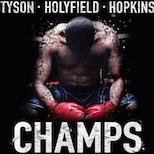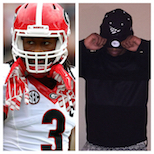Swinging For the Fences
04.13.2011
SPORTS

Loney had years of practice before he joined an RBI team. “We had a park right behind our house, and there were baseball games literally right behind us,” he said. “It was easy for my family and friends. It was right there. The ironic thing was that both my parents were basketball players.”
To develop into a big-league contender, it takes qualified coaches and enough players to create competition at a young age. “Where I grew up, competition in my area was really good,” Loney said. “It was a good overall district. In the states, it’s hard to play a pickup game of baseball. You need equipment and players to play. You can play in the street, but kids don’t really play in the streets anymore. That’s what RBI is about.”
Ushering its players into the big leagues isn’t RBI’s driving goal. “That’s the icing on the cake,” said Tom Brasuell, Major League Baseball’s vice president of community affairs. “The vast majority are never going to be in the majors. There are kids who played in RBI who came back to coach.” As the initiative has grown, MLB has become involved in campaigns to increase physical fitness on a national level among inner-city youth, and to promote the sport’s values.
“Baseball teaches teamwork better than any other sport,” Brasuell said. “[It also] teaches life lessons, sacrifice and fair play. In RBI we carry that beyond the field. We teach skills that pay the bills and break barriers using Jackie Robinson’s nine values.”
When Jackie Robinson collapsed racial barriers by donning a Brooklyn Dodgers uniform in 1947—and later that year took home the National League Rookie of the Year, with 12 homers, 29 stolen bases and a .297 batting average—he sent a message around the world that went deeper than the game. African-American athletes had played baseball since the early 1800s. The Negro Baseball League was formed in Kansas City, Missouri in 1920. Yet, when Robinson stormed the major leagues, a wave of talent followed him that would solidify the African-American impact on the sport.
Despite the progress made by black players in the ’60s and ’70s, the number of African-American players has declined sharply in recent years. In 1975, 27 percent of major league players were black. In 2009, that number dipped to 9 percent. People of color make up 38 percent of the league (27 percent are Latinos; 2.3 percent are Asian), according to the University of Central Florida’s Institute of Diversity and Ethics in Sports.





